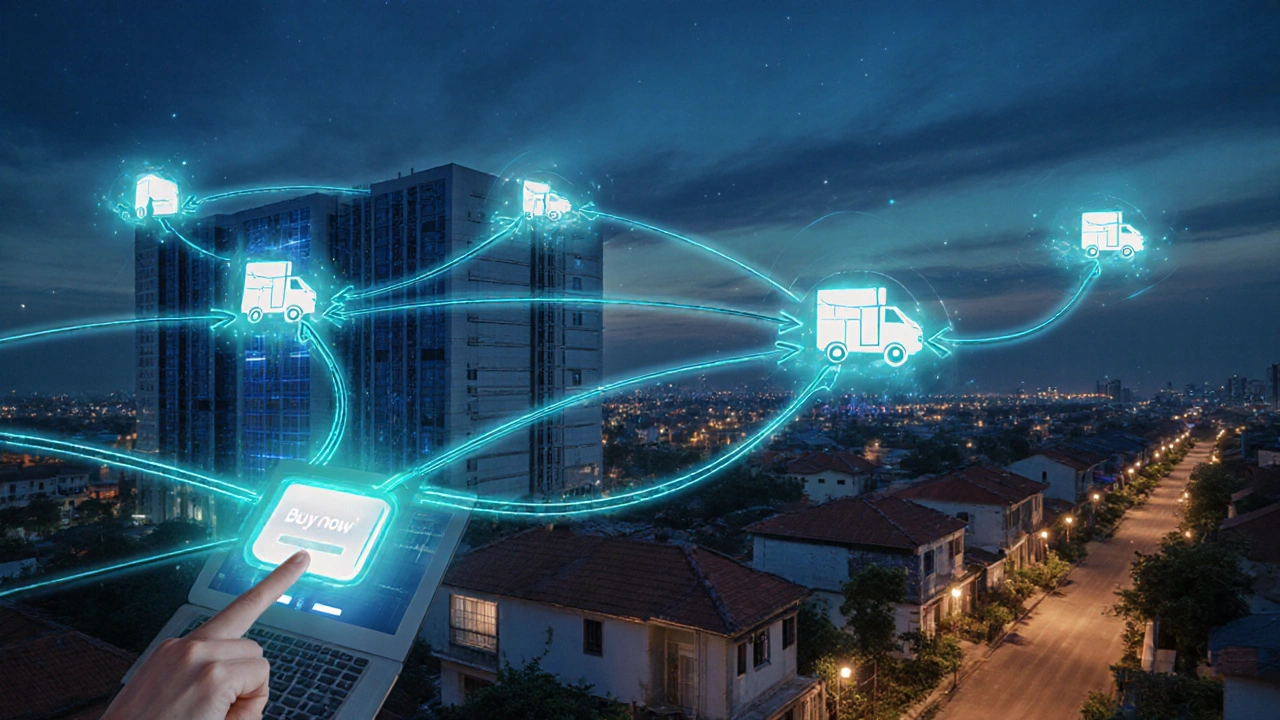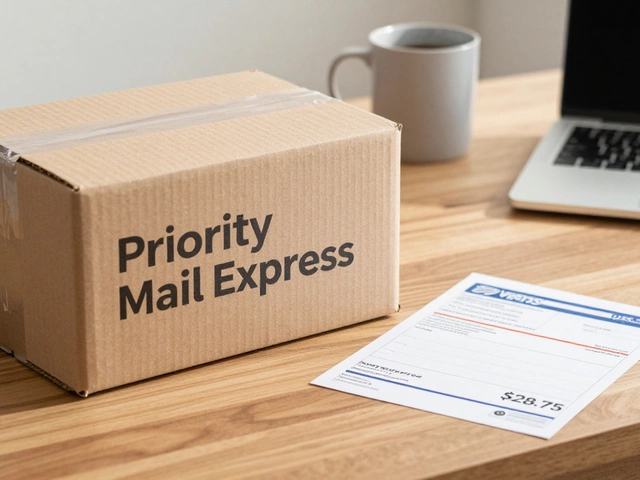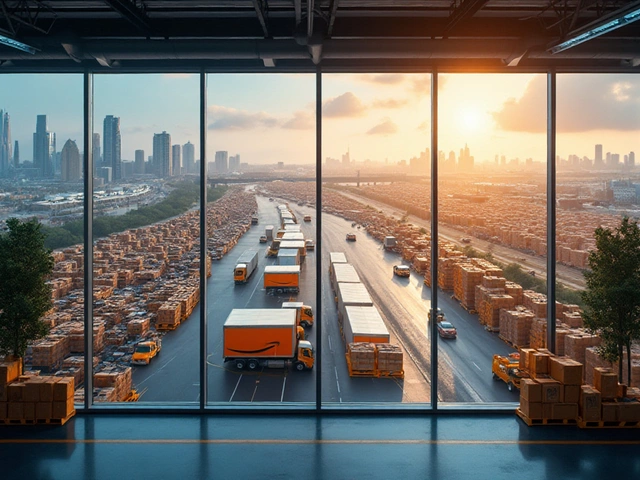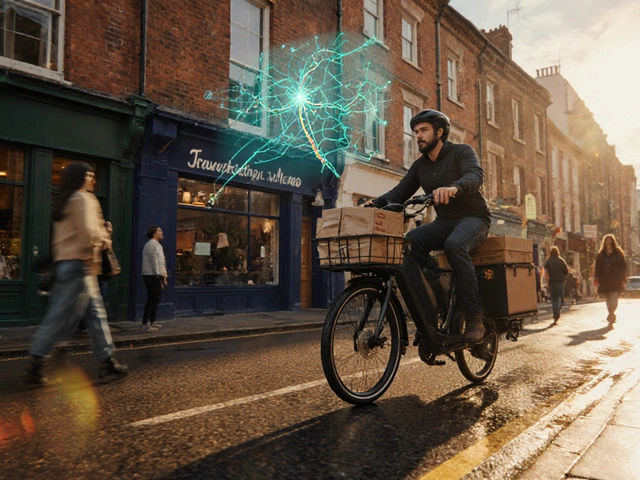Ecommerce Logistics Overview Tool
Core Components
Key Steps in Order Fulfillment
Cost Drivers to Watch
Common Pitfalls to Avoid
Quick Checklist
Tip: Regularly review your logistics strategy to align with business growth and customer expectations.
When you click ‘Buy now’ on a store, a hidden network springs into action to get that box to your doorstep. That network is Ecommerce logistics is the end‑to‑end process of moving products from a retailer’s inventory to the customer’s hands in an online‑shopping context. If you’ve ever wondered why some shops ship fast and cheap while others lag or charge extra, the answer lies in how well they manage this process.
Breaking Down the Core Pieces
Think of ecommerce logistics as a chain of linked tasks. Miss one link and the whole experience suffers. Below are the five main links you’ll hear about most often.
- Inventory management is the practice of tracking stock levels, locations, and availability in real time. Accurate inventory prevents overselling and costly stockouts.
- Order processing is the workflow that turns a customer’s click into a pick‑list, packing slip, and shipping label. Automation here cuts errors and speeds up fulfillment.
- Fulfillment is the act of picking, packing, and preparing goods for shipment, either in‑house or via a third‑party provider. This step often decides the shipping cost and speed you can offer.
- Last mile delivery is the final leg where a carrier hands the package to the customer, usually the most expensive part of the journey. It’s also the part customers notice most.
- Returns handling is the process of receiving, inspecting, and restocking returned items, a crucial piece for shopper confidence. A smooth return can turn a one‑time buyer into a loyal fan.
How It All Works - A Step‑by‑Step Walkthrough
- Customer places an order. The ecommerce platform captures the items, payment, and shipping address.
- Order processing checks inventory, reserves stock, and creates a pick ticket.
- Warehouse staff (or robots) locate the items, move them to a packing station, and verify quantities.
- Packing involves selecting the right box, adding cushioning, and printing a shipping label.
- Shipping carrier picks up the parcel from the fulfillment center.
- Last mile delivery takes over, navigating local routes until the package reaches the customer’s doorstep.
- Customer receives the order, confirms receipt, and leaves feedback.
- If the item is returned, returns handling inspects the product and decides whether to restock or discard.
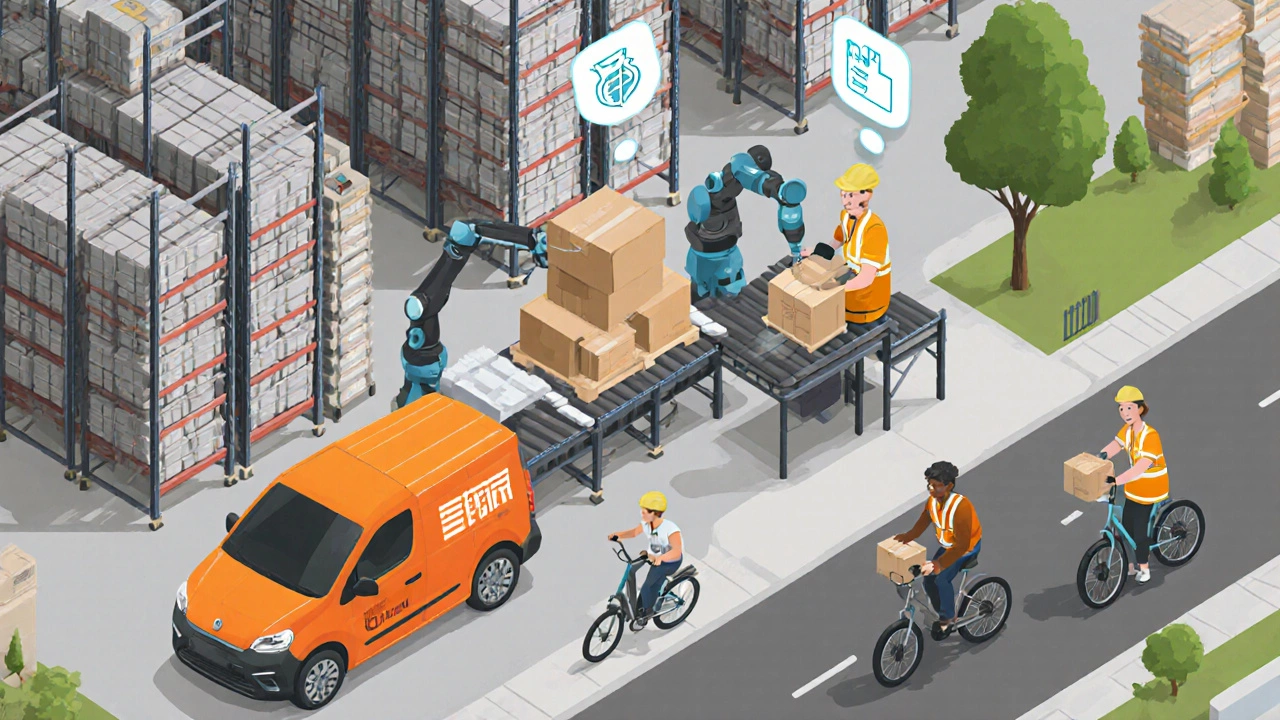
Choosing Between In‑House and Third‑Party Fulfillment
Many online sellers start by handling everything themselves, then graduate to a specialized partner. Below is a quick side‑by‑side look.
| Aspect | In‑House | Third‑Party Logistics (3PL) |
|---|---|---|
| Initial investment | Warehouse lease, equipment, staff salaries | Pay‑as‑you‑go fees, no large capital outlay |
| Scalability | Limited by space and workforce | Easily expands during peak seasons |
| Technology | Requires own Warehouse Management System (WMS) | 3PL provides built‑in WMS and analytics |
| Control | Full control over processes and branding | Relies on partner’s SOPs, but can be customized |
| Shipping rates | Negotiated individually with carriers | 3PL leverages volume discounts |
Key Cost Drivers You Can’t Ignore
Running ecommerce logistics isn’t just about speed; it’s also about the bottom line. Keep an eye on these four cost buckets.
- Storage fees. Warehouses charge per pallet or per cubic foot. Packing more tightly saves space and money.
- Picking labor. Manual picking costs more than automated pick‑to‑light systems. Even a modest robot can cut labor by 30%.
- Shipping carrier rates. Rates vary by weight, distance, service level, and volume. Bulk discounts and negotiated contracts matter.
- Returns processing. Each return can cost 20‑30% of the item’s price when you factor labor, repackaging, and potential depreciation.
Running a quick spreadsheet that adds up these items per order helps you decide whether to raise prices, trim packaging, or switch carriers.
Future Trends Shaping Ecommerce Logistics
Technology isn’t standing still. Here are three trends that will likely reshape the way online stores ship.
- AI‑driven demand forecasting. Machine‑learning models predict which SKUs will sell where, allowing you to pre‑position stock closer to customers.
- Micro‑fulfillment hubs. Small, automated warehouses inside city centers shave hours off the last‑mile journey.
- Carbon‑neutral shipping. More carriers offer electric‑vehicle fleets and carbon offset programs, appealing to eco‑conscious shoppers.
Early adopters who experiment with these tools often see higher order values and repeat purchases.
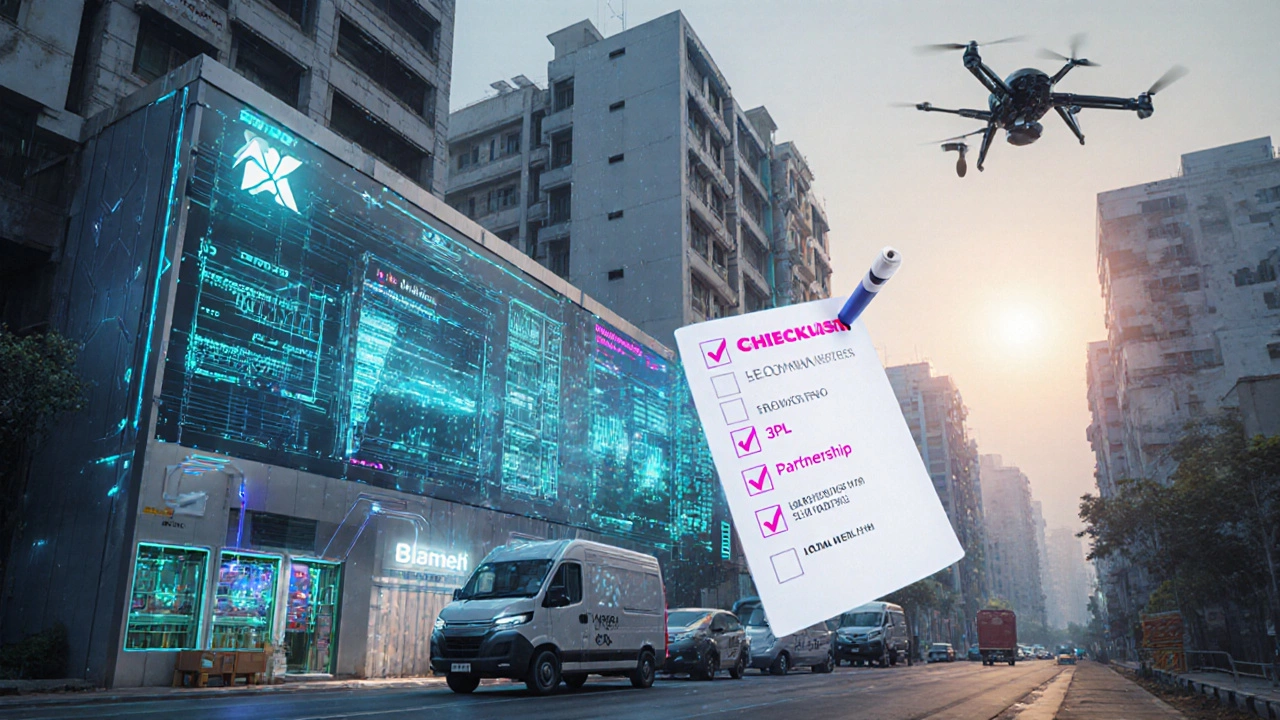
Common Pitfalls and How to Dodge Them
Even seasoned sellers stumble over certain traps. Spotting them early saves headaches later.
- Ignoring inventory accuracy. A single mismatch can lead to backorders and angry customers. Invest in barcode scanning and real‑time sync.
- Underestimating packaging costs. Cheap boxes may rip, leading to returns. Use a simple packaging calculator that weighs material cost against protection.
- Choosing the cheapest carrier without service data. Low rates may hide slower transit times or higher damage rates. Review carrier performance metrics before committing.
- Neglecting the return experience. A clunky return process drives shoppers away. Offer pre‑paid return labels and clear instructions.
Fixing these issues often requires a mix of better software, clearer SOPs, and a dash of data analysis.
Putting It All Together - Your Mini‑Checklist
- Map your end‑to‑end logistics workflow and identify bottlenecks.
- Choose a fulfillment model that matches order volume and growth plans.
- Set up real‑time inventory management tools.
- Negotiate carrier rates based on projected shipment volume.
- Design a simple, free‑of‑surprise returns process.
- Track key metrics: order‑to‑ship time, cost per order, return rate, and customer satisfaction.
Follow this list and you’ll turn a chaotic shipping maze into a well‑oiled machine.
Frequently Asked Questions
What exactly does ecommerce logistics cover?
It includes everything from managing stock, picking and packing orders, choosing shipping carriers, handling the last mile, and processing returns. In short, it’s the whole journey of a product from the warehouse to the buyer’s hands.
Should I handle fulfillment myself or outsource to a 3PL?
If you ship less than a few hundred orders a month and have space, in‑house can work. Once you grow beyond that or need faster scaling, a 3PL offers better rates, technology, and seasonal flexibility.
How can I reduce last‑mile delivery costs?
Pack lighter, negotiate volume discounts with carriers, and consider regional micro‑fulfillment hubs that bring inventory closer to customers.
What role does technology play in ecommerce logistics?
Software like WMS, order management systems, and AI forecasting ties every step together, reduces errors, and gives you real‑time visibility into costs and performance.
Is free shipping always a good idea?
Free shipping can boost conversion, but you must absorb the cost somewhere-higher product prices, minimum order thresholds, or smarter packaging to keep margins healthy.
